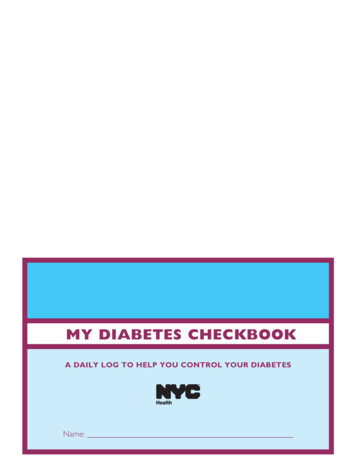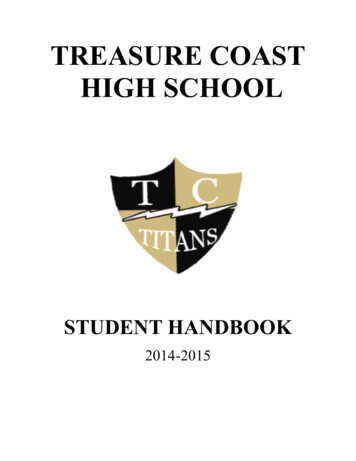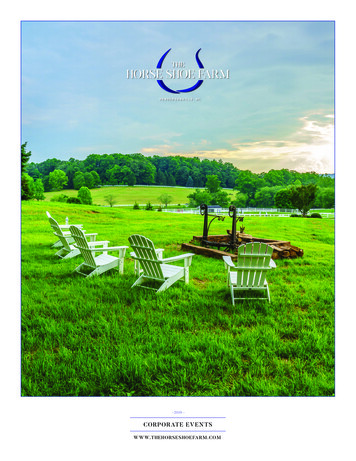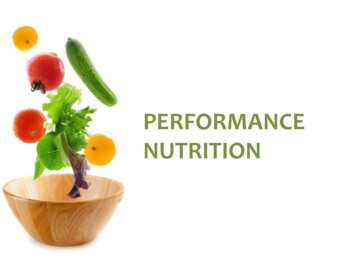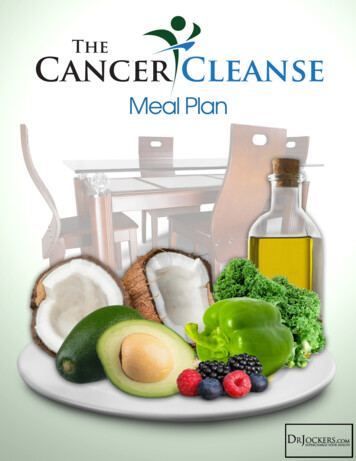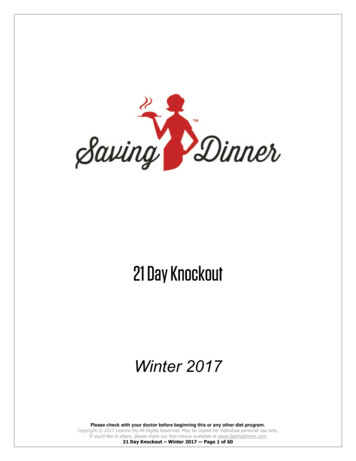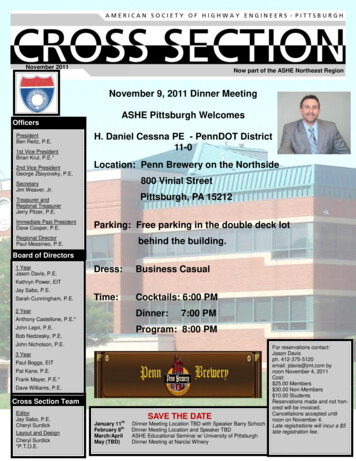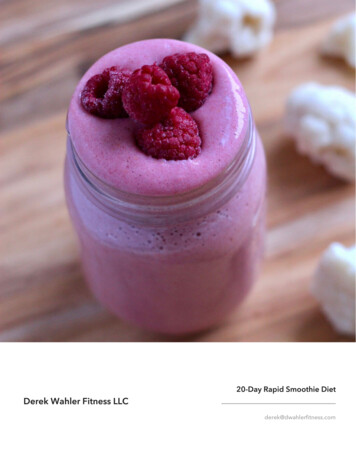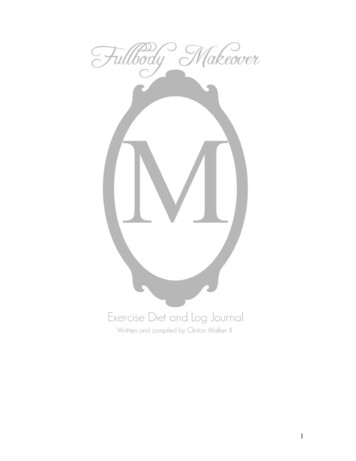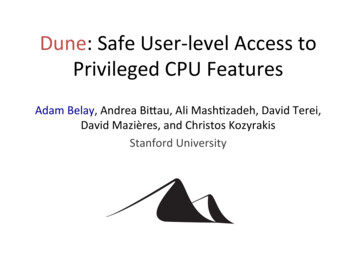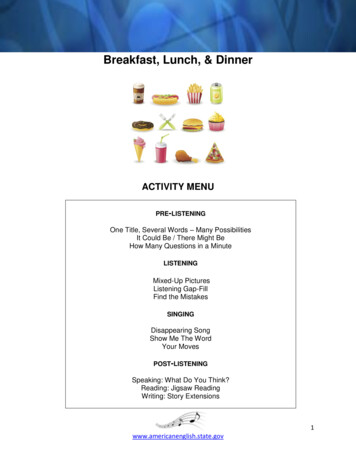
Transcription
Breakfast, Lunch, & DinnerACTIVITY MENUPRE-LISTENINGOne Title, Several Words – Many PossibilitiesIt Could Be / There Might BeHow Many Questions in a MinuteLISTENINGMixed-Up PicturesListening Gap-FillFind the MistakesSINGINGDisappearing SongShow Me The WordYour MovesPOST-LISTENINGSpeaking: What Do You Think?Reading: Jigsaw ReadingWriting: Story Extensions1www.americanenglish.state.gov
Breakfast, Lunch, & Dinner: Lyricsby Kermit Ruffins(4:03)1I wish I had a million dollarsI’d go out and buy some chocolate flowersI’d be eating ice cream for hoursIf I had a million dollars5I wish I had my own sweets shopI’d be eating taffy and lollipopsMaybe drink a six-pack of soda popIf I had my very own sweets shop9Y’all better eat your breakfast and eat your lunch and eat your dinner tooNo more candy, no more cake, nothing but some good soul food11We don’t need no breakfast lunch or dinnerWe can’t wait for Halloween and EasterWe’re gonna have a candy fiestaWe don’t need no breakfast lunch or dinner15I wish I had a million dollarsI’d go out and buy some chocolate flowersI’d be eating ice cream for hoursIf I had a million dollars19I wish I had my own sweets shopI’d be eating taffy and lollipopsMaybe drink a six-pack of soda popIf I had my very own sweets shop23Now clean that room and wash them hands and sit right down for dinnerEat them potatoes and eat them chops now that’s what I’m talking about25We don’t need no breakfast lunch or dinnerWe can’t wait for Halloween and EasterWe’re gonna have a candy fiesta28We don’t need no breakfast lunch or dinner (repeats)(oh yes you do)(oh y’all gonna eat them breakfast)(oh come on)(I’m not playing no come here)(stop it, stop it)(don’t make me come in that door)(stop playing with me)2www.americanenglish.state.gov
Pre-listening Activities: Choose one or two of the activities below.One Title, Several Words – Many PossibilitiesPurpose: To predict the content of the song; to generate interest in the song; to introducevocabulary from the song.Level: AllTime: 15 – 20 minutes, plus the length of the song (4:03)Preparation and Materials: Write the title of the song on the board. Prepare a copy of the fivepictures for the following words: chocolate, lollipops, soda pop, cake, ice creamInstructions: Tell students that the line on the board is the title of a song they will listen to. Askstudents to guess what the song is about. Write the ideas on the board. After the initial round ofpredictions, hang the pictures on the board and have students make new predictions. Write anynew ideas on the board. After listening to the song, ask the students to check if their predictionswere correct.It Could Be / There Might BePurpose: To generate interest in the song; to activate background knowledge about the topic;to introduce vocabulary from the song.Level: Level 2 and aboveTime: 10 – 15 minutesPreparation and Materials: Hang the large picture of a traditional American breakfast on theboard. Cover the picture with 5 or 6 strips of plain paper so that students cannot see the picture.Instructions: Divide the students into pairs. Tell students you will show them only part of thepicture and they should try to guess what the picture is about. Remove one strip of paper so thatonly one part of the picture is revealed. Ask students to describe what they see and ask them toguess what else might be in the picture. Continue to remove strips of paper and have studentspredict what the picture is about. Once all of the strips have been removed, ask students todiscuss if their predictions were correct.How Many Questions in a MinutePurpose: To generate interest in the song; to activate background knowledge about the topic;to introduce vocabulary from the song; to ask and answer questions.Level: Level 3 and aboveTime: 15 – 20 minutesPreparation and Materials: Hang the large picture of the food pyramid on the board.Instructions: Divide the students into small groups of three. Assign a different role/task to eachgroup member. The Questioner asks as many questions about the picture as possible in threeminutes. The Answerer answers the questions. The Counter counts how many questions wereasked during the time limit. After they have finished, students should switch roles until everystudent has a chance to play each role.3www.americanenglish.state.gov
Breakfast, Lunch & Dinner: One Title, Several Words – Many Possibilitiescake4www.americanenglish.state.gov
lollipops5www.americanenglish.state.gov
chocolate6www.americanenglish.state.gov
soda pop7www.americanenglish.state.gov
ice cream8www.americanenglish.state.gov
Breakfast, Lunch & Dinner: It Could Be / There Might Be9www.americanenglish.state.gov
Breakfast, Lunch & Dinner: How Many Questions in a Minute?10www.americanenglish.state.gov
Listening Activities: Choose one of the listening activities below.Mixed-Up PicturesPurpose: To listen for specific words.Level: AllTime: 15 – 20 minutes (to play the song 2 – 3 times)Preparation and Materials: Make a copy of the pictures for each group of students and cutthem apart. Answer key: page 20.Instructions: Divide students into groups and give each group a set of pictures. Have thestudents write the numbers 1 to 8 on a piece of paper. Have students listen to the song anddecide which picture was mentioned first, second, third, and so on. They should write thecorrect letter next to the number on their paper. Play the song two or three times so that mostof the students can order the pictures correctly. Check answers using the answer key.Listening Gap-FillPurpose: To listen for details.Level: Level 2 and aboveTime: 20 – 25 minutes (to play the song 2 – 3 times)Preparation and Materials: Make a copy of the gap-fill handout for each student. Answer key:see lyrics.Instructions: Give each student a handout. Have the students guess the missing words beforelistening to the song and write their guesses in the blank spaces. Then listen to the song andhave students check their guesses with the song and compare their answers with a partner.Play the song two times so everyone can double-check their answers.Find the MistakesPurpose: To listen for details; to listen for specific words or phrases.Level: Level 2 and abovetimes)Time: 10 – 15 minutes (to play the first 10 lines of the song 3 – 4Preparation and Materials: Make a copy of the Find the Mistakes handout for each group ofstudents. Answer key: see lyrics.Instructions: Divide students into small groups of three. Tell students there are there areseveral mistakes in the handout and when they find a mistake they should fix it by writing thecorrect word. Give the students a couple of minutes to read through the handout. Then play thefirst part of the song (lines 1 – 10, 0:00 – 1:37) two or three times. Play the song once more tocheck the answers.11www.americanenglish.state.gov
Breakfast, Lunch & Dinner: Mixed-Up PicturesA. cake------------------------- ------------B. soda pop------------------------- -----------C. buy------------------------- ------------D. Halloween------------------------- -----------E. lollipops------------------------- ------------F. ice cream------------------------- -----------G. drinkH. chocolate12www.americanenglish.state.gov
Breakfast, Lunch & Dinner: Listening Gap-FillDirections: First, read through these song lyrics and guess what the missing words might be.Write your guesses in the blanks. Second, as you listen to the song, correct what you havewritten or fill in any missing words.I wish I had a million (1)I’d go out and buy some (2) flowersI’d be eating (3) for hoursIf I had a (4) dollarsI wish I had my own (5) shopI’d be (6) taffy and lollipopsMaybe drink a six-pack of (7)If I had my very own (8) shopY’all better eat your breakfast and eat your lunch and eat your dinner tooNo more (9) , no more (10)nothing but some good soul (11)We don’t need no (12) , (13) or(14)We can’t wait for Halloween and EasterWe’re gonna have a candy fiestaWe don’t need no (15) , (16) or(17)13www.americanenglish.state.gov
Breakfast, Lunch & Dinner: Find the MistakesDirections: As you listen to the first part of the song, read the lyrics below. Find and correct all ofthe mistakes in the lyrics.1I hope I had a million dollarsI’d get out and buy some candy flowersI’d be eating ice cream in hoursIf I had a thousand dollars5I wish I have my own sweets shopI be eating taffy and chocolateMaybe eat a six-pack of orange juiceIf I had my very own fast food shop9Y’all better drink your milk and eat your lunch and eat your dessert tooNo more sweets, no more cookies nothing but some good soul food14www.americanenglish.state.gov
Singing Activities: Choose one of the singing activities below.Disappearing SongPurpose: To practice pronunciation and intonation; to recall words and phrases.Level: Level 2 and aboveTime: 25 – 30 minutes (to sing the song 4 times)Preparation and Materials: Write the song lyrics on the board.Instructions: Practice singing the song through once. Erase 10% of the lyrics, drawing a lineunder each missing word. Sing through the song again, filling in the missing words aloud.Continue erasing 10% each time until only 50% of the lyrics are left. Sing through one last time.Show Me the WordPurpose: To make print and sound connections; to learn vocabulary from the song.Level: Level 2 and aboveTime: 20 – 30 minutesPreparation and Materials: Prepare pieces of paper or cards for students to write words on.Write the following words on the board in random order: dollars, chocolate, ice cream, flowers,sweets shop, taffy, lollipops, soda pop, candy, million, eating, breakfast, lunch, dinner, eat,need, drink, fiesta.Instructions: Break the class into small groups and distribute 18 pieces of paper or cards toeach group. Students will divide the paper among themselves evenly and write the 18 wordsand phrases on their paper or cards. Once students are done and are still sitting in their groups,play the song through and have students sing and raise their cards when they come across thatword or phrase in the song. To make this competitive, have one student be the judge and watchstudents to make sure they are raising the correct card.Your MovesPurpose: To learn vocabulary from the song; to represent word meanings with actions.Level: AllTime: 30 – 40 minutes (depending on how many groups will perform)Preparation and Materials: Make a copy of the song lyrics for each student, or write the lyricson the board. Circle the following words and phrases each time they appear in the lyrics:I wish eat/eating million dollars no more buy drinkInstructions: Divide students into small groups and have each group create their own action forthe target words and phrases. Have the groups practice the action with the song several timesso they can remember them. Ask each group to perform their version of the song, and let theclass vote on the best performance.15www.americanenglish.state.gov
Post-Listening Activities: Choose one or two of the activities below.Speaking: What Do You Think?Purpose: To ask and answer questions; to summarize and present information.Level: Level 3 and abovesessions)Time: 40 – 50 minutes (may be split up into several classPreparation and Materials: Pre-teach the ideas of surveys and results: the purpose of asurvey, types of questions, how to calculate and present results.Instructions: Divide the students into small groups. Each group will write 5 questions based onthe song, each student needs a copy of the questions. Then each student will ask 4 or 5 otherstudents to answer the questions and write down the answers. Next, students will return to theiroriginal groups and present their findings to the class. Possible survey topics include:1. foods you like to eat at breakfast, lunch, and dinner2. healthy and unhealthy foods3. foods you like to eat when you sad or upset (“comfort” foods)Reading: Jigsaw ReadingPurpose: To summarize information presented in texts; to speak and listen in order to presentinformation; to practice note-taking; to collaborate in a team.Level: Level 2 and aboveTime: 50 – 60 minutes (may be split into several class sessions)Preparation and Materials: Make a copy of the note-taking form for each student. Make copiesof the paragraphs for each group.Instructions: Divide students into 3 groups. Each group will read a paragraph and writesummary notes. Then they will form new groups and explain their paragraph to a new group.The teacher should take the copies of the paragraphs away so the students must use theirnotes. After completing the activity, have students discuss the following questions:1. What do you typically eat for breakfast, lunch, and dinner? It is different from whatAmericans eat?2. If you had a million dollars, what would you eat for these meals?Writing: Story ExtensionsPurpose: To write creative narratives.Level: Level 2 and abovesessions)Time: 40 – 50 minutes (may be split up into several classPreparation and Materials: Make a copy of the song lyrics for each group of students, or writethem on the board.Instructions: Divide the class into groups. Tell the students to write a narrative about thesongwriter or the singer of the song. After the students have finished their narrative, have thegroups present their narratives to the class.16www.americanenglish.state.gov
American Breakfast, Lunch, and DinnerThe song Breakfast, Lunch, and Dinner is about children who want to eat candy, cake, lollipops,and ice cream instead of having breakfast, lunch, or dinner. Since most Americans do not havea “candy fiesta1” for their meals, here is a look at typical American breakfast, lunch, and dinner.Breakfast is usually eaten between 6 o’clock and 9 o’clock inthe morning, before students go to school and before adults goto work. Many American children drink orange juice and eatcereal with milk. Adults like to drink coffee or tea in themorning. Another popular breakfast food is toast2 with butter orjam. Other popular foods are oatmeal, fruit, yogurt, eggs,bacon, sausages, French toast3, waffles4, and of course,pancakes. Pancakes are a type of sweet bread cooked in apan on the stove. They are round and flat. Pancakes areespecially delicious with butter and maple syrup.Lunch is eaten between 11 o’clock in the morning and 1 o’clock inthe afternoon. Most students eat lunch at school, and either bringtheir lunch from home or eat at the school cafeteria. Manystudents bring sandwiches. Peanut butter and jelly sandwichesare very common among children, but sandwiches with cheese,sliced meat (such as turkey or ham), lettuce, mayonnaise5, andmustard6, are also common. Most adults eat at work or go out toa restaurant. Some adults bring leftovers to work for lunch – extrafood from dinner the night before.Dinner is usually eaten between 5 o’clock and 8 o’clock in the evening.Because many people from around the world have immigrated to theUnited States in the past 200 years, there is not really one type ofAmerican food. Many types of food from all around the world are popular inthe United States, such as Chinese food, Italian food, Japanese food, andMexican food. All of these foods are an important part of the American diet.When the weather is warm, Americans like to grill hamburgers7, hotdogs8, and other types of meat for a barbecue. Soups and stews9 are alsopopular in the winter.What do you typically eat for breakfast, lunch, and dinner? Is it different from whatAmericans eat? And if you had a million dollars, what would you eat for these meals?1fiesta The Spanish word for “party”toast a slice of bread that has been browned and “toasted” by heat3French toast a slice of bread dipped in an egg batter and then cooked in a pan, usually eaten with a sweet syrup4waffles a sweet batter that is cooked in a special grill to make it crispy, usually eaten with a sweet syrup5mayonnaise a thick, white sauce made of eggs and oil that is often put on sandwiches6mustard a yellow sauce made out of crushed seeds that is often put on sandwiches7hamburger a round, flat patty made out of ground beef that is grilled and eaten on a round bun8hot dog a type of sausage made from ground meat and eaten on a long bun9stew a dish made of meat and vegetables that is cooked slowly in broth or another liquid217www.americanenglish.state.gov
Breakfast, Lunch & Dinner: Jigsaw ReadingBreakfastLabel:Breakfast is usually eaten between 6 o’clock and 9 o’clock in the morning, before students go toschool and before adults go to work. Many American children drink orange juice and eat cerealwith milk. Adults like to drink coffee or tea in the morning. Another popular breakfast food istoast1 with butter or jam. Other popular foods are oatmeal, fruit, yogurt, eggs, bacon, sausages,French toast2, waffles3, and of course, pancakes. Pancakes are a type of sweet bread cookedin a pan on the stove. They are round and flat. Pancakes are especially delicious with butter andmaple syrup.1toast a slice of bread that has been browned and “toasted” by heatFrench toast a slice of bread dipped in an egg batter and then cooked in a pan, usually eaten with a sweet syrup3waffles a sweet batter that is cooked in a special grill to make it crispy, usually eaten with a sweet --- hLabel:Lunch is eaten between 11 o’clock in the morning and 1 o’clock in the afternoon. Most studentseat lunch at school, and either bring their lunch from home or eat at the school cafeteria. Manystudents bring sandwiches. Peanut butter and jelly sandwiches are very common among youngchildren (and many adults!), but sandwiches with cheese, sliced meat (such as turkey or ham),lettuce, mayonnaise1, and mustard2, are also common. Most adults eat at work or go out to arestaurant. Some adults bring leftovers to work for lunch – extra food from dinner the nightbefore.12mayonnaise a thick, white sauce made of eggs and oil that is often put on sandwichesmustard a yellow sauce made out of crushed seeds that is often put on ------- erLabel:Dinner is usually eaten between 5 o’clock and 8 o’clock in the evening. Because many peoplefrom around the world have immigrated to the United States in the past 200 years, there is notreally one type of American food. Many types of food from all around the world are popular inthe United States, such as Chinese food, Italian food, Japanese food, and Mexican food. All ofthese foods are an important part of the American diet. When the weather is warm, Americanslike to grill hamburgers1, hot dogs2, and other types of meat for a barbecue. Soups and stews3are also popular in the winter1hamburger a round, flat patty made out of ground beef that is grilled and eaten on a round bunhot dog a type of sausage made from ground meat and shaped like a tube and eaten on a long bun3stew a dish made of meat and vegetables that is cooked slowly in broth or another liquid218www.americanenglish.state.gov
Note-taking FormParagraph 1: BreakfastParagraph 2: LunchParagraph 3: Dinner19www.americanenglish.state.gov
Breakfast Lunch and Dinner: Answer KeysMixed-Up Pictures: Answer Key1.2.3.4.5.6.7.8.C. buyH. chocolateF. ice creamE. lollipopsG. drinkB. soda popA. cakeD. HalloweenListening Gap-Fill: Answer KeyI wish I had a million (1) dollarsI’d go out and buy some (2) chocolate flowersI’d be eating (3) ice cream for hoursIf I had a (4) million dollarsI wish I had my own (5) sweets shopI’d be (6) eating taffy and lollipopsMaybe drink a six-pack of (7) soda popIf I had my very own (8) sweets shopY’all better eat your breakfast and eat your lunch and eat your dinner tooNo more (9) candy , no more (10) cakenothing but some good soul (11) foodWe don’t need no (12) breakfast , (13) lunch or(14) dinnerWe can’t wait for Halloween and EasterWe’re gonna have a candy fiestaWe don’t need no (15) breakfast , (16) lunch or(17) dinnerFind the Mistakes: Answer Key1I hope wish I had a million dollarsI’d get go out and buy some candy chocolate flowersI’d be eating ice cream in for hoursIf I had a thousand million dollars5I wish I have had my own sweets shopI I’d be eating taffy and chocolate lollipopsMaybe eat drink a six-pack of orange juice soda popIf I had my very own fast food sweets shop9Y’all better drink eat your milk breakfast and eat your lunch and eat your dessert dinner tooNo more sweets candy, no more cookies cake nothing but some good soul food20www.americanenglish.state.gov
Preparation and Materials: Write the song lyrics on the board. Instructions: Practice singing the song through once. Erase 10% of the lyrics, drawing a line under each missing word. Sing through the song again, filling in the missing words aloud. Continue erasing 10% each time until only 50% of the lyrics are left. Sing through one last time.
